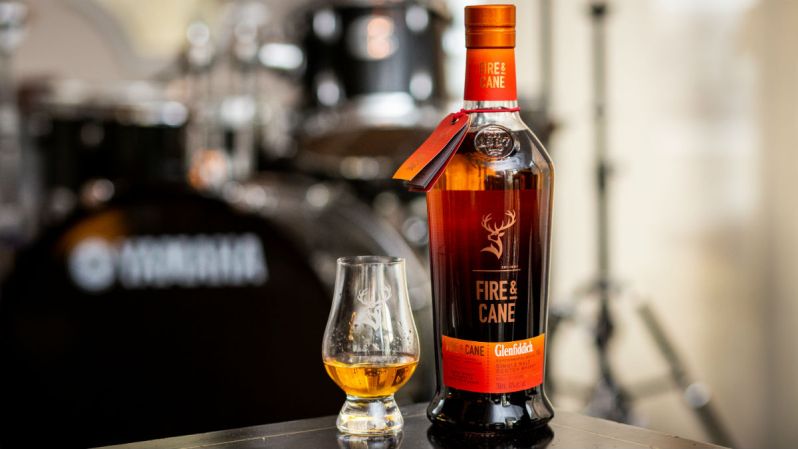Glenfiddich’s newest release is a bit of a dual-headed hydra, if hydra were made of different styles of Scotch whisky and barrel finishes. And didn’t face off against Hercules. OK, so the new Glenfiddich release — named Fire & Cane — isn’t exactly a hydra, but it does have multiple intriguing aspects to it.
The impetus for the newest release from Glenfiddich was born all the way back in 2003 when malt master Brian Kinsman ran peated spirit through the stills at the distillery for the first time.

Kinsman took this idea over time and expanded on it. Fire & Cane is a marriage of peated and non-peated whisky which were both aged in bourbon casks (sourced exclusively from the Kelvin Cooperage in Louisville, Kentucky). After the initial aging period, Kinsman married the whiskies and finished them in rum casks from a variety of South American countries for a period of three months.
“This new single malt truly encapsulates the spirit of experimentation. We started with a question: What would happen if we did something with peat that we had not done before? The answer is an unconventional and unexpected whisky, one that is truly surprising,” Kinsman said in a statement. “During the tastings, some experienced the unusual smoky notes, while others tasted toffee flavors — this phenomenon can be attributed to the Scotch spending three months in sweet rum casks. It’s a bold combination, which I’m sure will appeal and intrigue single malt enthusiasts as well as those looking to try something new and different.”

Fire & Cane is the fourth release in the Experimental Series. The previous three releases were: Glenfiddich India Pale Ale Cask Finish, Glenfiddich Project XX (a blend of malts chosen by twenty different people), and, the most recent, Glenfiddich Winter Storm (which was aged in French Oak ice wine casks from Canada).
The name for Fire & Cane comes from the dual aspects of experimentation. On one hand, the fire is representative of the peat fires that create the smoky whisky. On the other, the cane represents the use of rum casks and all the flavors that those impart on the married whisky.
Bottled at 43 percent ABV, Fire & Cane has a mix of peat and toffee on the nose, followed by a palate of more peat smoke mingling with green fruits and wood spices (think roasting marshmallows and Granny Smiths over a campfire and making slightly healthier s’mores). The finish is sweet and smoky.
Glenfiddich Fire & Cane retails for around $50.



